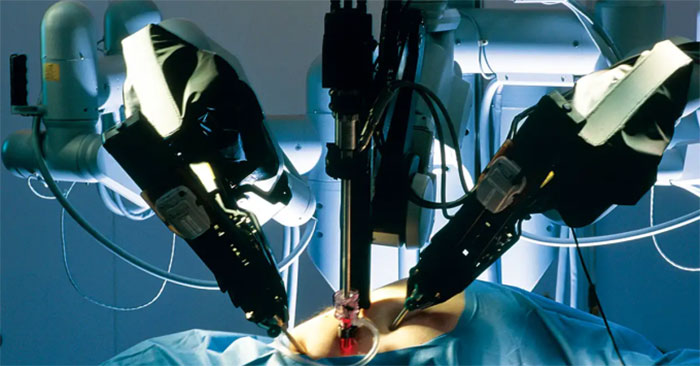Singapore hospitals use technology to save time and human resources costs
By simply pressing a button and touching a screen, dozens of tissue samples in Tan Tock Seng Hospital's (TTSH) laboratory can be processed at the same time. If using the manual method as before, employees would have to spend many hours working with hundreds of samples every day.
TTSH is the first medical facility in Singapore to use a system to treat bacteria that can cause infections. Dr. De Partha Pratim said the laboratory now operates more efficiently despite the increased workload.
'The system saves time and effort, returns results faster, so the overall operation is also faster. Workload increases about 4 - 5% each year but we do not need to hire new employees. Automation contributes to solving a huge amount of work while still ensuring time, according to Mr. Pratim.
Not only TTSH, many other medical facilities also rely on technology to solve the human resource crisis and cut operating costs.
Singapore General Hospital (SGH) implements a digital tracking system to help ensure surgical instruments are clean and safe when needed. Medical staff no longer need to take notes with pen and paper.
 Singapore hospitals use technology to save time and human resources costs Picture 1
Singapore hospitals use technology to save time and human resources costs Picture 1
After the tools are cleaned, staff can easily identify which set they belong to and then proceed with packaging. Thanks to the system, the hospital saves nearly 2,000 man hours per month. Deputy director of nursing Goh Meh Meh said that after being freed from tedious work, staff morale is better because they now only need to spend time on more valuable things.
Each month SGH needs about 25,000 sets of sterile instruments, which is extremely tiring to maintain. With the number tracking system, medical staff can quickly trace and deliver them promptly to doctors.
Besides surgical instruments, other supplies such as needles or bandages also need to be delivered to the right place at the right time. SGH strives to improve material delivery efficiency with an automated system that receives requests from all medical departments, selects what is needed, and then forwards it to inspection staff.
Before the system was in place, dozens of employees had to work 10-hour shifts a day to meet the demand for delivering supplies. Now it only takes 3 people in half the time.
'We don't need to stockpile a lot of supplies, so the hospital's operating costs are reduced,' said Assistant Director for Supply Chain Rosli Boedjang. In the near future, a similar system may be used at Eastern Integrated Medical Center.
You should read it
- Why does Apple have millions of masks to donate to the medical force?
- MIT releases free blueprints for cheap breathing apparatus that can be copied in every hospital in the world
- How to use Heal - Medical ID on iPhone in an emergency
- How to access Medical ID right on the lock screen iOS 10 Lock Screen
- Danger: Hackers can target medical devices, change medical examination and treatment results
- Tips to recognize genuine medical masks, fake very simple
- The difference between snake venom and toad toxin
- Another major health facility was attacked, affecting nearly half of the Canadian population
- Google's AI chatbot for medical support has been tested in hospitals
- 10 jobs to replace IT staff out of 'heat'
- New discovery of a long-standing vaccine may help fight SARS-CoV-2
- Ho Chi Minh City has deployed the application 'Lookup for medical examination and treatment' on smartphones
May be interested

Detection of gene variation that leads to left-handedness

The doctor controls the robot to operate on the patient at a distance of 2,000km

Evolutionary angle: Humans are developing 'extra' arteries in the forearm

How many coronaviruses are there? What gen sars-cov 2?

China says it will test the corona virus vaccine in April

Detect changes in clinical symptoms of new corona virus






 Top 5 best free human resources management software for small businesses
Top 5 best free human resources management software for small businesses 4 hiring tips to help you build a perfect startup team
4 hiring tips to help you build a perfect startup team Some items should be brought, the app to install and notes to avoid being penalized when going to Singapore
Some items should be brought, the app to install and notes to avoid being penalized when going to Singapore After the Vietnamese market, Go-Jek decided to play 'bloody' with Grab in Singapore
After the Vietnamese market, Go-Jek decided to play 'bloody' with Grab in Singapore 7 Brilliant Reasons to Relocate to Singapore This Year
7 Brilliant Reasons to Relocate to Singapore This Year 8 HR Tech Trends That Will Influence Your Business in 2021
8 HR Tech Trends That Will Influence Your Business in 2021